Super Cropping Cannabis: Everything You Need to Know
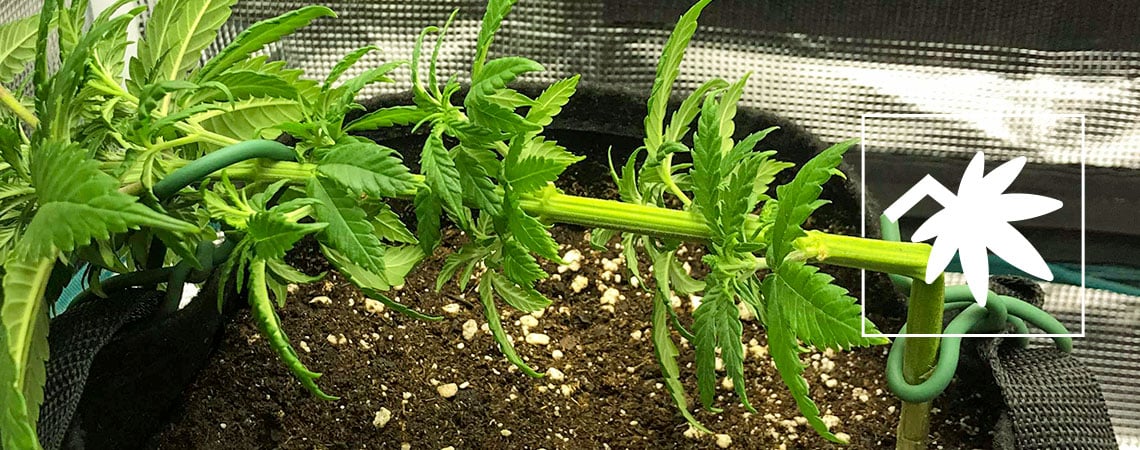
Super cropping is a hands-on, high-stress training method that’s brutally effective. If the idea of breaking branches strikes you as “Breaking Bad”, don’t worry. This super cropping grow guide will give you the confidence and skills to perform the technique properly.
For growers with a few crops under their belts, there are numerous advanced techniques that can push yields even further. Super cropping is one such skill with a track record of producing high-yielding cannabis. And the best part? All you need to get started is a steady pair of hands and a healthy plant.
What is super cropping?
Super cropping (stem mutilation) is a high-stress training technique designed to provoke a defensive reaction. This results in bushier plants with larger yields, thanks to a hormonal response and an uptick in cannabinoid production. Super cropping is performed by carefully bending branches to damage their inner tissue without actually snapping them. Then, it’s simply a case of waiting a week or so for the branch to heal, and presto, plants are bigger and stronger than before.
Of course, the keyword with super cropping is “carefully” bending, as you’ll need some finesse to master this technique. However, there’s no need to worry; we’ll take you through everything you need to know about this yield-boosting technique, including essential tips and mistakes to avoid.
What is the difference between LST and super cropping?
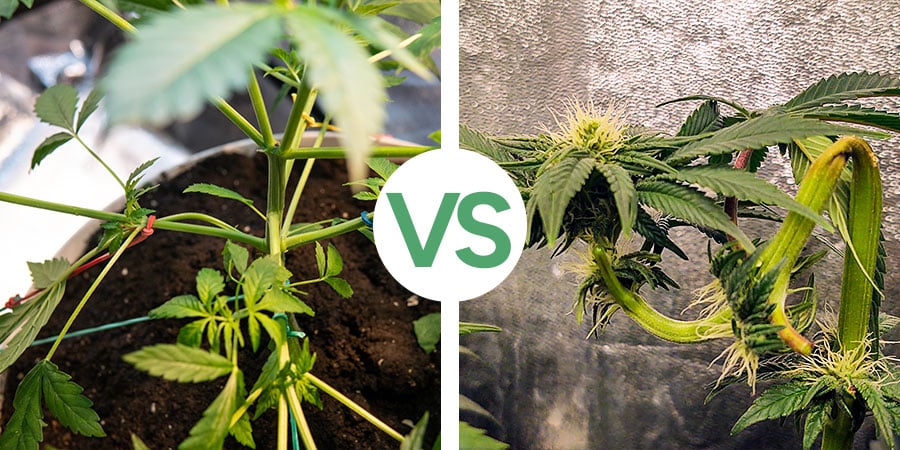
Both low-stress training (LST) and super cropping have the same principle in mind—bending branches to control a plant's growth and trigger a stress response. With LST, you gently tie branches down to encourage lateral growth, guiding the plant into the desired position or shape over a matter of weeks. With super cropping, you damage the fibres within a branch to bend and shape it. You can think of LST as a basic form of plant training, while super cropping is its more advanced counterpart.
Benefits of super cropping cannabis
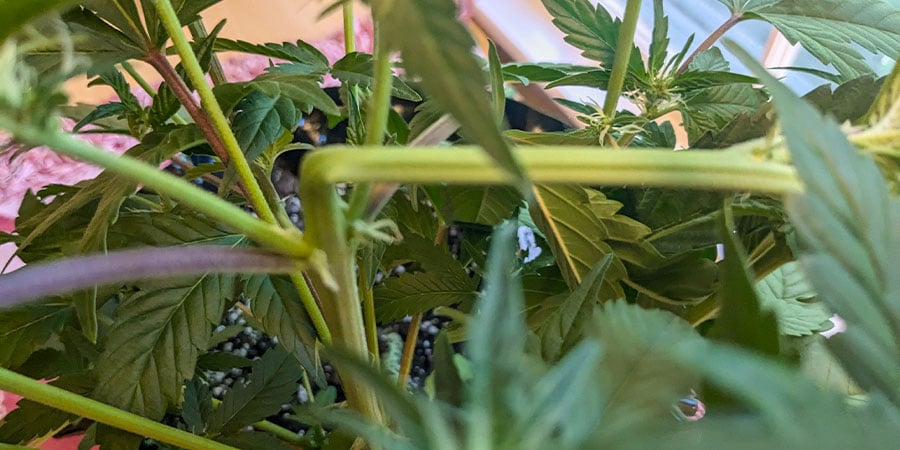
Super cropping is hands-down the most productive training method that is not reliant upon tools or highly advanced cannabis cultivation skills. Bare hands and finesse are all that’s needed. Still, that’s not the only benefit of this technique.
- Bushier plants: With more control over the canopy and position of branches, you can encourage a bushier crop. Plants stay shorter, but will be just as strong and vigorous thanks to the newly created knuckle at the bend site.
- Larger yields: By carefully bending branches into your desired position, you can maximise exposure to those all-important bud sites. The more bud sites exposed to your grow light, the bigger the potential yields.
- Increased potency: Stress in cannabis plants is a fantastic way to boost cannabinoid and terpene production, as these chemicals form part of the plant’s innate defence mechanism. Super cropping induces the stress needed to trigger a response from your plant without damaging it beyond repair.
- Improved light penetration: A more uniform canopy means more even light distribution. If you’re tight for space or want to grow multiple plants in a small grow tent, super cropping ensures that light penetrates deep into the canopy, and that your plants get the resources they need to thrive.
- Enhanced plant resilience: With super cropping, you’re putting plants through enough stress that they don’t fail, but come back bigger and stronger than before. This can improve resilience and stability, increasing the chances of achieving a successful harvest.
When to super crop cannabis
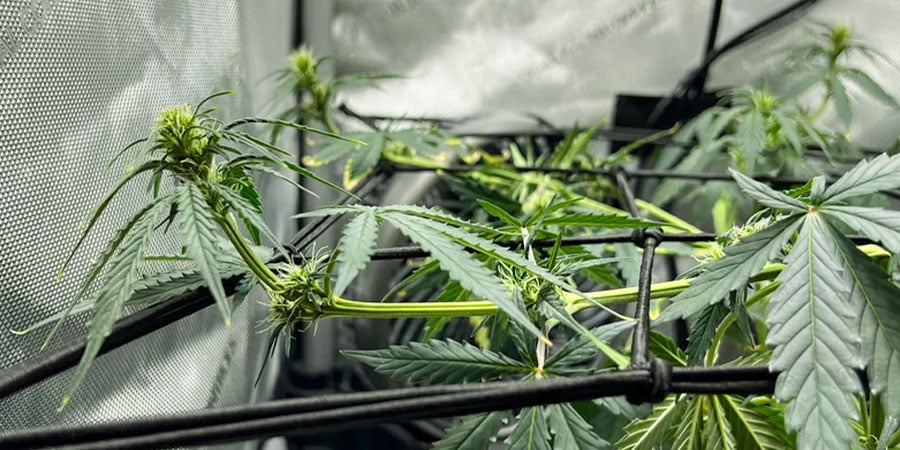
Contrary to most other high-yield pruning and training methods, you shouldn’t be in a hurry to start super cropping. While FIM, topping, and LST are performed as soon as plants develop a set or two of true leaves in the early phase of vegetative growth, super cropping requires a little more patience.
Optimal timing
To ensure the best results, wait until at least week 3 or 4 of vegetative growth. This gives your ganja time to develop and reach at least 30 cm in height. However, as cannabis plants transition from vegetative growth to flowering, they undergo hormonal changes, and super cropping is no longer effective.
Similar to topping, the plant's auxin distribution is manipulated to confuse the plant as to which branch is the main stem. When a plant transitions to flowering, its focus shifts to bud production and stems become rigid, so you’ll need to plan your super cropping window accordingly.
Strain-specific timing
Waiting until week 3 or 4 of the vegetative phase is preferred, but every strain differs in its growth pattern. Therefore, growers will need to adjust the super cropping window according to a plant's characteristics. Some strains have an incredibly vigorous vegetative phase before taking their time in bloom. In this case, you might need to start super cropping early to have control over the branches and create an even canopy.
Plant health considerations
Super cropping is a high-stress technique that’s designed to trigger a plant’s survival response. As such, your cannabis should always be in good health, with strong growth and no other issues. Super cropping an already stressed plant (whether due to a lack of light, nutrients, or a pest infestation) could spell disaster, as it is simply too much for it to handle.
How to super crop cannabis
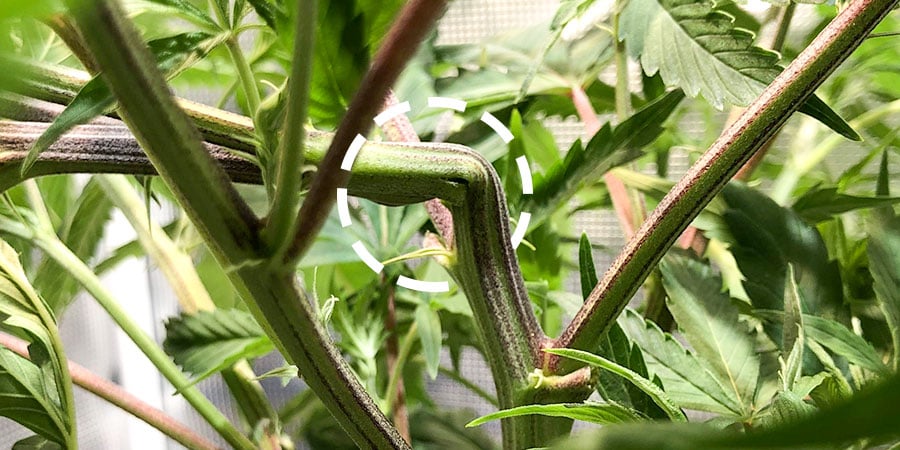
Super cropping is the handiest cannabis training technique around, literally. If all goes smoothly, it can be a simple two-step process. You don’t need any tools aside from the universal duct tape (for any accidental breaks).
Identify shoots to super crop
- Examine your plants and identify the imaginary line where you will super crop. This will become the top of your canopy, so make sure it fits within the confines of your grow tent or room.
Squeeze and bend
- The still flexible upper regions of shoots are the easiest to work with and will not have grown a thick bark. Grab the branch—always start with a branch rather than the main stem—and hold it between your thumb and forefinger.
- Gently squeeze the shoot and give it a bit of a wiggle as you apply pressure. Within 5–10 seconds, the shoot will feel soft and limp. Just bend it down slowly at a 90-degree angle. That’s super cropping!
- Repeat on the rest of the branches (leaving the main stem for last) for squat, bushy plants with a flat canopy. Once the plant has had 5–7 days to recover, a thick “knuckle” will form on the squished area.
Support the plant
- One final step to consider is giving plants some extra support, especially on the bigger and thicker branches. If you’re concerned about the integrity of any of the branches, you can always add a small amount of duct tape to protect the bend and keep it secure. You can remove the tape after a week or so.
- You’ll also want to gently tie down the main stem with some plant ties, otherwise, in a few days, it’ll correct itself and start growing upwards again.
Safety precautions
Because your first attempt at super cropping is usually the worst, we suggest beginning with a branch rather than the main stem. As you get a feel for the plant, you will better understand how much pressure to apply. Mistakes are bound to happen, especially if you are super cropping several plants.
Should you snap a branch or main stem and find yourself with a gaping wound instead of a soft, pliable shoot, don’t panic. Keep that duct tape handy. Patch the wound with a swift field dressing and be extra careful with the remaining branches. The good news is that cannabis plants are incredibly resilient, and after approximately 10–14 days, the wound should have healed enough to remove the tape.
Disadvantages of super cropping cannabis
Some growers will be disappointed to hear that super cropping is unsuitable for their autoflowering cannabis plants. However, some auto strains are receptive to LST, so not all hope is lost. While super cropping is relatively easy to perform, plants need a lengthy vegetative growth cycle for the technique to be effective. Sadly, this is a luxury you won’t have with autoflowering strains. Typically, photoperiod marijuana varieties need around 6–8 weeks of vegetative growth to make the most of super cropping.
Moreover, for larger crops, super cropping can be too labour intensive. In cases such as these, SOG or ScrOG are better (and far more time-effective) options. That being said, for the patient home grower who requires stealthy, low-profile, productive cannabis plants, super cropping is the perfect method, so it’s all about finding a balance.
Super cropping: Advanced tips and tricks
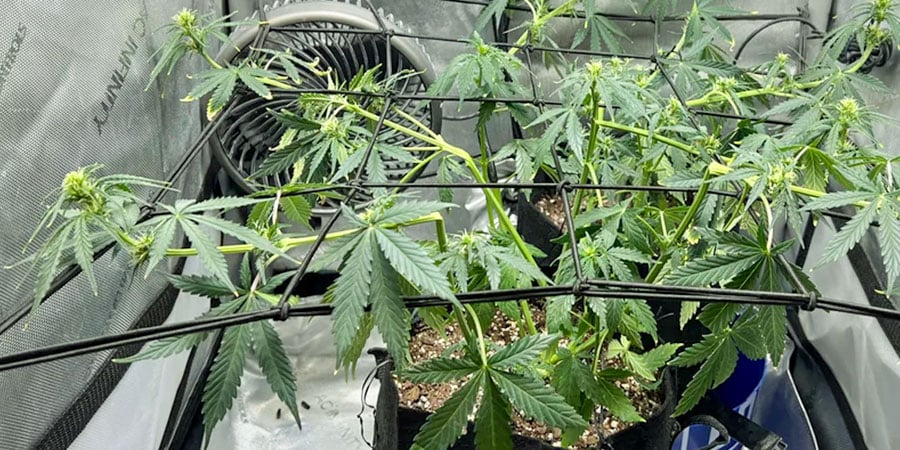
Once you've mastered the gentle art of bending cannabis branches, super cropping is a lot less daunting of a technique. However, if you’re ready to keep pushing your yields (and skills) to their limits, then the advanced tips below are crucial.
- Extend the vegetative phase: With all the focus on carefully bending your cannabis plants, it’s easy to forget that the process is still stressful. As such, plants may need an extra few weeks in veg to get back on track. Thankfully, once plants recover, they’ll be better than ever, so having a slightly longer vegetative phase will pay dividends when it comes time to harvest. Keep a careful eye on plants after super cropping, and only switch to the flowering phase once all branches have healed properly and plants look healthy.
- Review your grow space: Once you get the hang of super cropping, it feels great to have such a high level of control over your plants. Don’t forget, though, that the purpose of super cropping is to help even out the canopy and increase light exposure to bud sites. When bending and securing branches, assess how the plant is positioned within your grow space and ensure a uniform structure for maximum light coverage. You want to fill all corners of your grow space evenly.
- Combining super cropping with other techniques: Super cropping is but one tool in a grower's arsenal, so why not employ the entire armoury? Super cropping works incredibly well alongside LST, as it’s natural to tie down the main stem. You could even try topping to encourage multiple colas, but ensure you leave a week or two between topping and super cropping to give plants the recovery time they need.
Common super cropping mistakes and how to avoid them
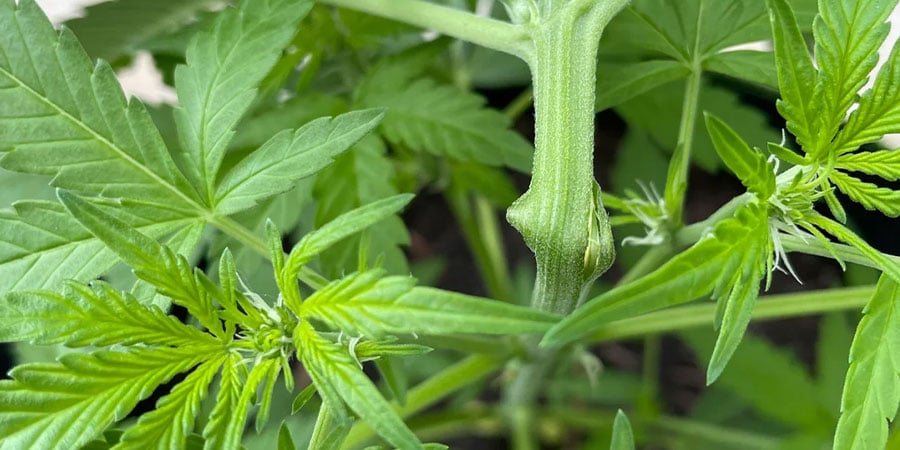
Super cropping is an intermediate to advanced training technique, but that doesn’t mean beginners should avoid it. You just need to take your time and be patient. However, if you do make a mistake, don’t panic! The cannabis plant is incredibly resilient and, provided you know how to rectify your mistakes, should recover quickly.
- Accidentally snapping a stem: It’s bound to happen, even if you’ve super cropped plants a hundred times before. The good news is that all but the worst breaks are repairable with your trusty duct tape. As soon as you notice the outer layer of a branch or stem snap, stop what you’re doing and secure it with some tape. Most plants heal after a few days. Discolouration around the break is normal, but if you’re still not happy with the condition of a bend after a few days, re-apply the tape and wait until the protective knuckle forms.
- Poor air circulation: It’s easy to get carried away with super cropping, especially when you see the incredibly dense canopy forming. However, with that luscious canopy comes the increased risk of bud rot. If you do notice any affected buds, remove them quickly (being careful not to touch any other plants). Once you’re happy the rot has been removed, prune some of the lower fan leaves and reposition plants to ensure adequate airflow.
- Rushing plants: With photoperiod plants, it’s largely up to the grower when they shift from veg to flowering. If you’ve super cropped your plants, but they still aren’t looking as healthy as they were pre-crop, then give them another week to get back on track. During this time, it’s crucial to establish a good wet–dry cycle with watering and to ensure plants have plenty of nutrients, too.
Super cropping: High risk, high reward
There’s no doubt that super cropping is a risky training technique, and without plenty of practice, you may encounter a few broken branches along the way. However, as long as you give plants time to recover (and you have plenty of duct tape handy), there’s little reason to avoid this high-stress technique.
After all, a little stress goes a long way, and super cropping is a great way to push potency and yields to their limits. Just be patient and master the art on small branches before bending the main stem!

















 United States
United States












